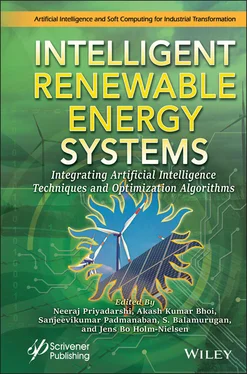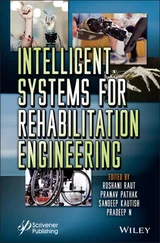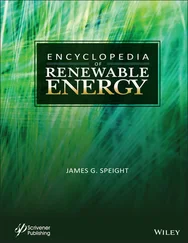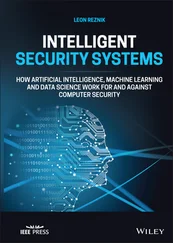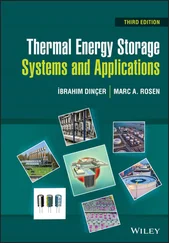(c) Average student:In order to increase their overall success in the test, students with less interest in a subject aim to offer an average effort. The students of this category can be named as subject-wise average student. While giving average effort in a particular subject, students will try to improve their overall performance by paying more effort to the other subjects which are offered to them. The performance of this category of students may be explained with the help of (Equation 1. 3) [66]
(1.3) 
where, Xi indicates the marks/grade of the i th student of the class in a subject, mean indicates the average marks obtained in that particular subject, and rand generates a random number between 0 and 1.
(d) Students who try to improve randomly: Except the three categories of students discussed above, there are certain students who strive to enhance their results without recognising the effort offered by rest of the students in the class. The students of these kinds always try to improve their performance randomly to some extent up to their limitations, depending upon their interest in the subject. Improvement of the students’ performance based on this concept may be represented by (Equation 1. 4) [66]
(1.4) 
where min and max are the two variables that indicate the minimum and the maximum marks of the subject, respectively, and rand generates a random number between 0 and 1.
The process of getting interested in a subject for different students is not deterministic. It depends on the students’ psychology. So, it may be said that the selection of different categories of students is a random process.
Incorporating the psychology of the aforementioned four categories of students, the SPBO algorithm can be visualized easily using the flowchart given in Figure 1.1. Each (student) population consists of various variables analogous to the subjects offered to the students. The students try to give the subjects effort so that their overall performance in the exam is improved. The fitness function is selected as the overall marks/grades obtained by the students. The effort given by the student is appreciated if her/his performance gets improved. Similarly, if the fitness function improves, a variable change is accepted. And, finally, the performance of the best student will be considered as the best solution or optimum solution. The performance of different optimization algorithms depends upon their own parameters. But SPBO has no such tuneable parameter.
1.2.2 Performance of SPBO for Solving Benchmark Functions
In order to evaluate the performance of SPBO for optimizing the benchmark functions, ten of the CEC-2005 benchmark functions are considered. The ten different CEC-2005 benchmark functions among twenty-five are presented in Table 1.1. To compare the performance of SPBO with other optimization methods, the results obtained by using SPBO are compared to those obtained by using the different optimization methods namely PSO, TLBO, CS, and SOS. Twenty-five individual runs are performed for each of the functions and for each of the algorithms.
The performance of the algorithms selected is evaluated on the basis of the optimal result obtained and on the basis of convergence mobility. For the purposes of analysis, the algorithms are found to converge when the gap between the optimal function result and the result obtained crosses below 1×10 -5. The results obtained below 1×10 -5are considered as equal to zero. The parameters of PSO, TLBO, CS and SOS are considered according to the dimension of the benchmark function. But SPBO does not have any parameter and the size of the population needs not vary according to the dimension of the benchmark functions. With the increase of dimension of the functions, the size of the population of the proposed SPBO needs not to be increased. That’s why the population size of SPBO for all the considered benchmark functions is considered to be constant. It is considered as 20 for the proposed SPBO. In order to have a fair comparison of the performance of all the algorithms, the analysis is done based on the number of fitness function evaluations (NFFE) taken to converge.

Figure 1.1 Flowchart of the SPBO algorithm.
Table 1.1 CEC 2005 benchmark function [67].
| Problem |
Type of the function |
Name of the functions |
F(x*) |
Initial range |
Bounds |
Dimension ( D ) |
| F1 |
Unimodal |
Shifted Sphere Function |
-450 |
[-100,100] D |
[-100,100] D |
30 |
| F2 |
Unimodal |
Shifted Schwefel’s Problem 1.2 |
-450 |
[-100,100] D |
[-100,100] D |
30 |
| F3 |
Unimodal |
Shifted Rotated High Conditioned Elliptic Function |
-450 |
[-100,100] D |
[-100,100] D |
30 |
| F4 |
Unimodal |
Shifted Schwefel’s Problem 1.2 with Noise in Fitness |
-450 |
[-100,100] D |
[-100,100] D |
30 |
| F5 |
Unimodal |
Schwefel’s Problems 2.6 with Global Optimum on Bounds |
-310 |
[-100,100] D |
[-100, 100] D |
30 |
| F6 |
Basic multimodal |
Shifted Rosenbrock’s Function |
390 |
[-100, 100] D |
[-100, 100] D |
30 |
| F7 |
Basic multimodal |
Shifted Rotated Griewank’s Function without Bounds |
-180 |
[0, 600] D |
[0, 600] D |
30 |
| F8 |
Basic multimodal |
Shifted Rotated Ackley’s Function with Global Optimum on Bounds |
-140 |
[-32, 32] D |
[-32, 32] D |
30 |
| F9 |
Basic multimodal |
Shifted Rastrigin’s Function |
-330 |
[-5, 5] D |
[-5, 5] D |
30 |
| F10 |
Basic multimodal |
Shifted Rotated Rastrigin’s Function |
-330 |
[-5, 5] D |
[-5, 5] D |
30 |
1.2.3 Mixed Discrete SPBO
In general, the optimization algorithm is used to optimize (minimize) the objective function by obtaining the optimum value of the variable vector X. To optimize the variable vector X, consist of some continuous and discrete variables, a mixed discrete version of SPBO may be used. For an n -dimensional problem that includes continuous and discrete variables, the variable vector may be represented as in (Equation 1.5).
(1.5) 
where [ Xcont ] and [ Xdisc ] are the continuous and discrete variable vectors, respectively. For the scenario of m continuous variables and remaining ( n-m ) discrete variables, the [ Xcont ] and [ Xdisc ] maybe expressed as in (Equation 1.6) and (Equation 1.7), respectively.
(1.6) 
Читать дальше
